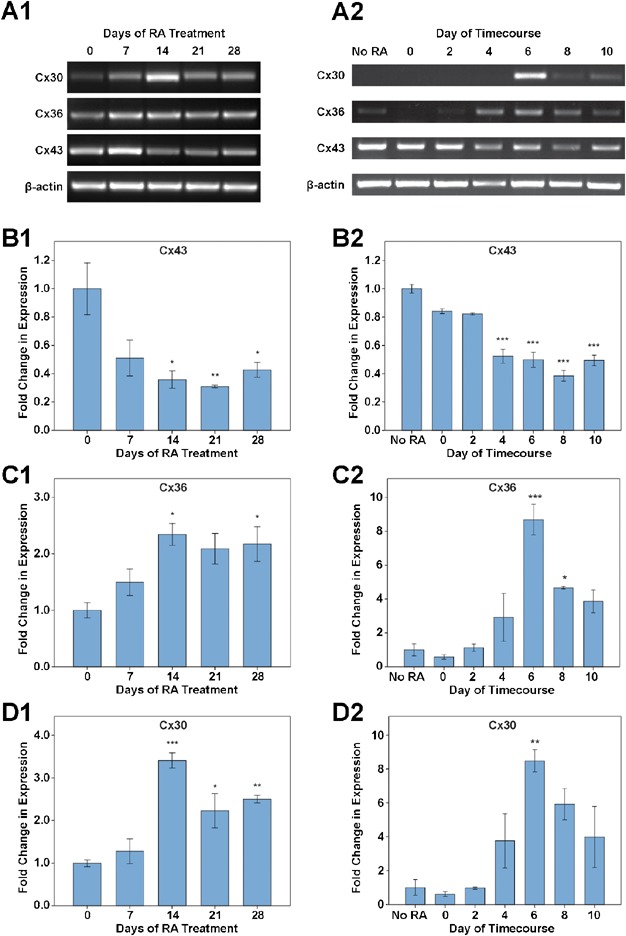Figure 1.

Temporal expression of Cx30, Cx36 and Cx43 mRNA during differentiation of the NT2/D1 and P19 EC cell models, as assessed by RT-PCR. Experiments were performed in triplicate independent cultures. Statistically significant changes relative to undifferentiated cells are denoted by asterisks (*P < 0.05; **P < 0.01; ***P < 0.001). (A) Representative images of the expression pattern of Cx30, Cx36 and Cx43 subtypes, and beta-actin, during the timecourse of NT2/D1 (A1) and P19 EC (A2) neuronal differentiation. A similar pattern of expression for the three Cx subtypes was seen in both cell lines. (B) Changes in Cx43 mRNA expression. In the NT2/D1 cell line, Cx43 decreased between day 0 and day 14 (P < 0.05) and remained downregulated at days 21 (P < 0.01) and 28 of RA treatment (P < 0.05) (B1). Cx43 significantly decreased in the P19 EC cell line by day 4 post-RA treatment and remained downregulated throughout the remainder of the timecourse (P < 0.001) (B2). (C) Changes in Cx36 mRNA expression. A significant increase in Cx36 expression was observed at 14 and 28 days RA treatment of NT2/D1 cells (P < 0.05) (C1), while in the P19 EC model a significant increase in Cx36 expression was observed at 6 (P < 0.001) and 8 days post-RA (P < 0.05) (C2). (D) Changes in Cx30 mRNA expression. In the NT2/D1 model, a threefold increase in expression of Cx30 was observed at the 14 days RA (P < 0.001), and the subtype was also elevated at days 21 (P < 0.05) and 28 (P < 0.01) (D1). A greater than ninefold increase in expression of Cx30 was observed at 6 days post-RA (P < 0.001) relative to undifferentiated P19 EC cells (D2).
